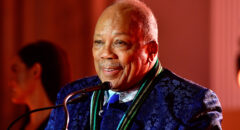 Administration on Aging (AoA) programs and services
Administration on Aging (AoA) programs and services
assist many African American elders to live independently and enjoy an improved
quality of life as well as to provide assistance to their families and
caregivers. AoA is committed to
increasing and improving service delivery to all minority older adults,
including African American elders.
Health and Chronic Illnesses
The leading disease-related causes of death among
African Americans include heart disease, cancer, HIV infection, cerebrovascular
diseases, diabetes, pneumonia, influenza, and pulmonary diseases. While the
Medicare program covers the cost of vaccinations to prevent influenza and
pneumonia, only 14 percent of all African Americans ages 65 or older have
received annual vaccinations.
AoA is working to end health disparities among
older members of racial and ethnic minority populations as part of the U.S.
Department of Health and Human Services initiative, “Racial and Ethnic
Approaches to Community Health 2010.” In 2000, AoA awarded a grant to the Boston
Public Health Commission to develop culturally sensitive, community-based health
promotion and disease prevention programs and to educate older African Americans
in the Boston area about the impact and prevention of cardiovascular disease and
diabetes. The Boston Public Health Commission will:
-
Identify
culturally appropriate prevention activities; -
Encourage the
adoption of healthy lifestyles that acknowledge and integrate appropriate
cultural practices and diets; and -
Increase access
to medical and health interventions.
Life Expectancy
While demographers estimate that the number of
African American elders will increase by 102 percent between 1990 and 2020,
African Americans continue to have a lower life expectancy rate than the overall
population. According to the National Vital Statistics Reports (Vol. 47, No.
28), African American life expectancy is 70.2 years, compared to an average of
76.5 years for all population groups.
The difference in life expectancy is even more striking among African
American men, who have a life expectancy of only 66.1 years, compared to the
national average of 73.6 years for all men.
African Americans and Family Caregiving
More than 10 percent of the nation’s 22.4 million
caregiving households are African American. More than half of African American
caregivers find themselves “sandwiched” between caring for an older person and a
younger person, and caring for more than one older person. African American
caregivers are also more likely to live with the care recipient and spend an
average of 20.6 hours per week providing care. In addition, 66 percent of
African American caregivers are employed full or part-time.
Older African Americans and Poverty
More than 68 percent of African American elders are
poor, marginally poor, or economically vulnerable. African American elders are
more than one and a half times as likely as white elders to live below the
poverty line. More than one in four African American elders have incomes that
fall below the poverty line.
Living Arrangements
Many older African American women are vulnerable to
social isolation and economic hardship. Nearly 40 percent of African American
women ages 65 and older live alone compared to 19 percent of African American
males ages 65 and older. African Americans elders are also less likely to be
married compared to white elders. For older African American men, 55 percent are
married compared to 75 percent of older white men, and 22 percent of older
African American women are married, compared to 42 percent of older white
women.
AoA Encourages African American Communities to Get
Involved
African American communities are encouraged to take
an active role in developing state and local plans that affect African American
elders, including those related to the distribution of Older Americans Act
funds. Groups that represent African American elders, their families, and their
service providers are invited to voice concerns and needs during the public
hearing process.
Under Section 297(8) of the Older Americans Act,
state agencies must demonstrate effectiveness in reaching older individuals with
the greatest economic and social need, paying particular attention to low-income
minority individuals. State agencies invite people and organizations that know
about the needs and concerns of low-income minority older individuals to
participate in public hearings that are part of the process of developing state
aging plans.








